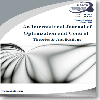Pricing in M/M/1 queues when cost of waiting in queue differs from cost of waiting in service
Pricing in M/M/1 queues when cost of waiting in queue differs from cost of waiting in service
___
- [1]Leclerc, F., Schmitt, B. H., Dube, L., Waiting time and decision making: Is time like Money? Journal of Consumer Research, 22(1), 110-119 (1995).
- [2]Naor, P., The regulation of queue size by levying tolls. Econometrica, 37(1), 15-24 (1969).
- [3]Edelson, N. M., Hildebrand, D.K., Congestion tolls for queueing processes. Econometrica, 43, 81-92 (1975).
- [4]Chen, H., Frank, M. Z., State dependent pricing with a queue. IIE Transactions, 33, 847-860 (2001).
- [5]Chen, H., Frank, M. Z., Monopoly pricing when customers queue. IIE Transactions, 36, 569-581 (2004).
- [6]Knudsen, N. C., Individual and social optimization in a multiserver queue with a general cost-benefit structure. Econometrica, 40, 515-528 (1972).
- [7]Sariyer, G., Effective service design in strategic customer setting. Journal of Computational and Theoretical Nanoscience, 12(12), 5109-5113 (2015).
- [8]Mendelson, H., Whang, S., Optimal incentive-compatible priority pricing for the M/M/1queue. Operations Research, 38, 870-883 (1990).
- [9]Bradford, R., Pricing, routing, and incentive compatibility in multi-server queues. European Journal of Operational Research, 89(2), 226-236 (1996).
- [10]Rao, S., Peterson, E. R., Optimal pricing of priority services. Operations Research, 46, 46-56 (1998).
- [11]Debo, L. G., Veeraraghavan, S. K., Equilibrium in queues under unknown service rates and service value. Chicago Booth Research Paper, 2011: 11-45.
- [12]Anand, K. S., Pac, M. F., Veereraghavan, S. Quality-speed conundrum: tradeoffs in customer intensive services. Management Science, 57(1), 40-56 (2011).
- [13]Alizamir, S., Vericourt, F., Sun, P., Diagnostic accuracy under congestion. Management Science, 59(1), 157-171 (2013).
- [14]Wang, S., Debo, L. G., Scheller, W. A., Smith, S. F., Design and analysis of diagnostic service centers. Management Science, 56(11), 1873-1890 (2009).
- [15]Oliveras, M., Lu, Y., Musalem, A., Schilkrut, A., Measuring the effect of queues on customer purchases. Management Science, 59(8), 1743-1763 (2013).
- [16]Giebelhausen, M. D., Robinson, S. G., Cronin, J. J., Worth waiting for: increasing satisfaction by making consumers wait. Journal of the Academy of Marketing Science, 39(6), 889-905 (2011).
- [17]Sariyer, G., Effect of in queue waiting on decision making. International Journal of Basic and Applied Sciences, 14(6), 13-18 (2014).
- [18]Hassin, R., Haviv, M., To queue or not to queue. International Series in Operations Research and Management Science, 59, Kluwer Publishing (2002)
- ISSN: 2146-0957
- Yayın Aralığı: 4
- Yayıncı: Prof. Dr. Ramazan YAMAN
Pricing in M/M/1 queues when cost of waiting in queue differs from cost of waiting in service
Artificial bee colony algorithm variants on constrained optimization
Erkan CELİK, Nezir AYDIN, Alev Taskin GUMUS
The effects of LT-SN on energy dissipation and lifetime in wireless sensor networks
New soliton solutions of the system of equations for the ion sound and Langmuir waves
Hasan BULUT, Seyma Tuluce DEMİRAY
Brezzi-Pitkaranta stabilization and a priori error analysis for theStokes control
Copula approach to select input/output variables for DEA
Olcay ALPAY, Elvan HAYAT AKTURK
On solutions of variable-order fractional differential equations
